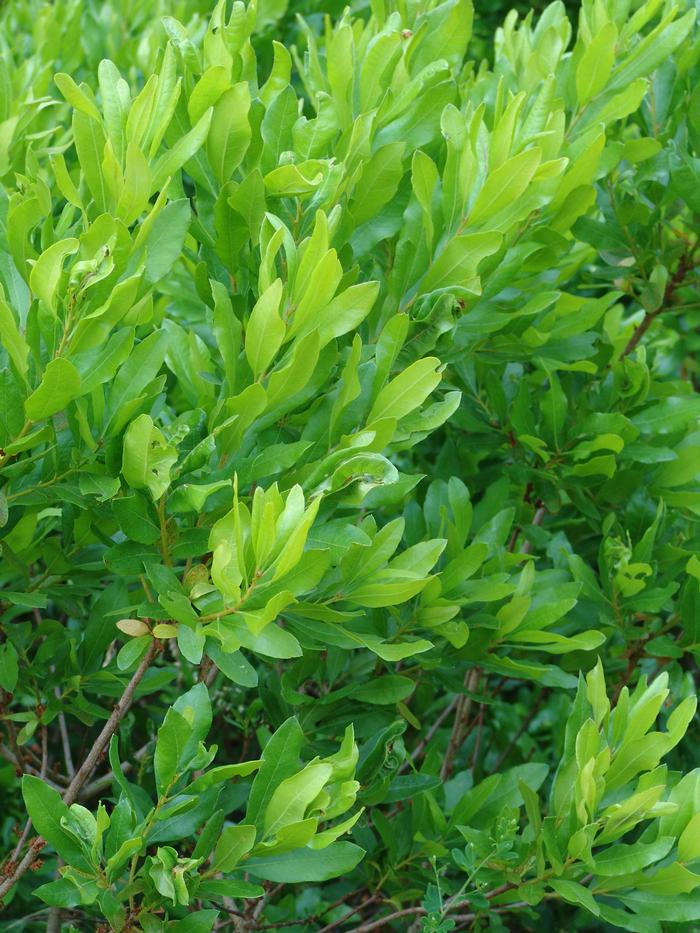Small bayberry is rhizomatous, semi-evergreen, and common on rocky slopes, sandy barrens, and wetlands all up and down the Atlantic coast. The foliage emerges glossy and green, with edible aromatic leaves. Great for hedges and low screening.
Return to Plant Search Home
Cultivation Status
|
Exposure
|
Soil Moisture
|
Ecoregion
| • |
(84) Atlantic Coastal Pine Barrens |
| • |
(82) Acadian Plains and Hills |
| • |
(58) Northeastern Highlands |
| • |
(83) Eastern Great Lakes Lowlands |
| • |
(59) Northeastern Coastal Zone |
|
Ornamental Interest
| • |
Summer Fruit |
| • |
Winter Interest and/or Evergreen |
| • |
Spring Bloom |
|
Attracts Wildlife
| • |
Host Plant |
| • |
Pollinator Powerhouse Plant |
| • |
Attracts Songbirds |
|
Tolerance
| • |
Urban Environment |
| • |
Drought Tolerant |
| • |
Deer/Rabbit Resistant |
| • |
Salt Tolerant |
|
Additional Attributes
| • |
Fragrant |
| • |
Dioecious (fruits only on female plants) |
| • |
Erosion Control/Soil Stabilization |
| • |
Low Maintenance |
| • |
Edible |
|
Landscape Use
| • |
Massing |
| • |
Naturalize |
| • |
Hedge/screening |
|
Attractive Fall Foliage and/or Ornamental Fruit
|
Growth Habit
|

